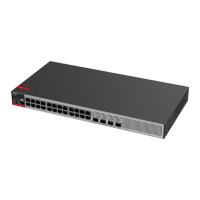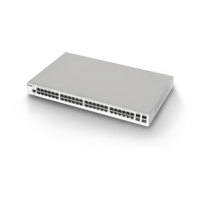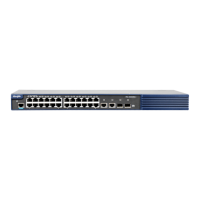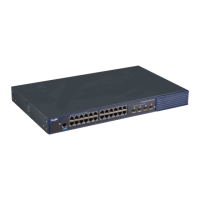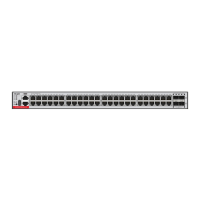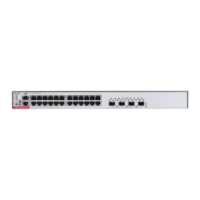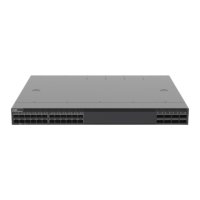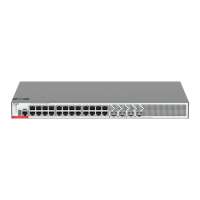Command Reference MAC Address Commands
The MAC address notification function is specific for only dynamic MAC address and secure MAC
address. No MAC address trap message is generated for static MAC addresses. In the global
configuration mode, you can use the snmp-server enable traps mac-notification command to
enable or disable the switch to send the MAC address trap message.
The following example enables the MAC address notification function.
Ruijie(config)# mac-address-table notification
Ruijie(config)# mac-address-table notification interval 40
Ruijie(config)# mac-address-table notification history-size 100
Sets the method of handling the MAC address trap message..
show mac-address-table
notification
Displays the MAC address notification configuration and the
MAC address trap notification table.
snmp trap mac-notification
Enables the MAC address trap notification function on the
specified interface.
2.7 mac-address-table static
Use this command to configure a static MAC address. Use the no or default form of the command to
restore the default setting.
mac-address-table static mac-addr vlan vlan-id interface interface-id
no mac-address-table static mac-addr vlan vlan-id interface interface-id
default mac-address-table static mac-addr vlan vlan-id interface interface-id
Destination MAC address of the specified entry
VLAN ID of the specified entry, in the range from 1 to 4094.
Interface (physical interface or aggregate port) that packets are forwarded to
No static MAC address is configured by default.
Global configuration mode.
A static MAC address has the same function as the dynamic MAC address that the switch learns.
Compared with the dynamic MAC address, the static MAC address will not be aged out. It can only be
configured and removed by manual. Even if the switch is reset, the static MAC address will not be
lost. A static MAC address shall not be configured as a multicast address. Use show
mac-address-table static to display the static MAC address.
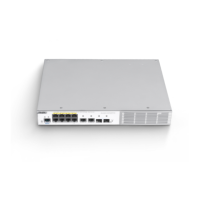
